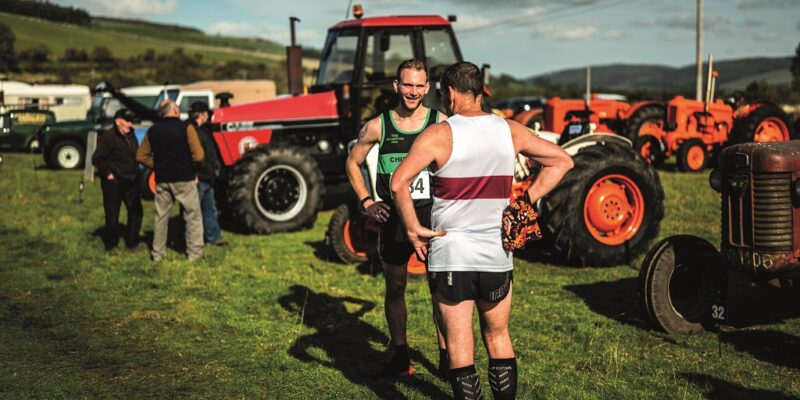What began centuries ago as a practical and necessary means to sort stray sheep is now a red-letter date on the calendar for Scottish Borders farmers and visitors alike
MORE FROM SCOTLAND MAGAZINE
If you happen to be in the Scottish Borders the first Saturday in October, mark it as one of those ‘Save the Date’ invitations that have become fashionable in recent years, although this one is not for a wedding.
With farmer friends in the Borders, I had the opportunity to attend the 156th Yetholm Border Shepherds’ Show in 2019 with His Grace, The Duke of Roxburghe as its patron, and the show is due to return in October 2021.
The idea of a formally organised show had its genesis in the 1850s, but actually grew from the centuries-old practice of area farmers gathering in the autumn to sort through any stray sheep that had infiltrated their flock from a neighbours.
In those days, free-range grazing was much more common than it is now, with hefting being a common application. Hefting is an agricultural practice whereby livestock stays on a particular piece of ground throughout their lifetime.
This presents several advantages. The stock is familiar with their ground, the hills and terrain, knows where to find good grazing and shelter in bad weather, and births its lambs in the same general area every year.
Generations of ewes and lambs learn from their environment and adapt to it. They can develop resistance to certain diseases common in their area, and also become more tolerant to mineral deficiencies that may be present in their diet. Hefting brings balanced grazing to the entire hill, providing an evenly distributed usage of vegetation habitats, landscapes, and the overall wellbeing of the ecosystem. Sounds like the perfect system, right? Except that sheep have a propensity to wander out of their area and wind up mixed in with a neighbour’s flock. And from these meagre beginnings, one of the region’s major social events of the year has developed.

Because it is the final show of this type in Scotland for the year, the Yetholm Show is always well-attended. With spring lambs now away to market, crops gathered, sheep in good fettle after the summer grazing, and the pace slowing slightly with winter approaching, area farmers are breathing a collective sigh of relief and are anxious for a social gathering.
Some will have hardly seen their neighbours since the previous year’s show – or in the case of the 2021 show, since the show two years’ previous – other than from a distance across the fields moving sheep with Border collies and quad bikes. The show affords them a time to properly “catch up and have a wee blether” as I heard two old boys chatting away. And of course, bring their best sheep to show and look over the competition.
With the name Yetholm Border Shepherds’ Show, one could correctly assume that sheep are the star attraction. With an all-volunteer force setting up temporary pens the day before the event and prepping the grounds for the incoming crowd, the Friday before the Saturday show is a beehive of activity.
The show is held on the haugh, which is the flat area near the Bowmont Water separating Town Yetholm and Kirk Yetholm. Early Saturday morning sees livestock trailers unloading sheep of all breeds for the competitions, although years ago sheep were traditionally herded down the road to the show field.
Scottish Blackface, Cheviot, Bluefaced Leicester, Suffolk, Texel, Grayface, and Shetland are some of the breeds exhibited, which are then broken down in sub-categories such as ewe, gimmer (young sheep that has not had a lamb), ewe lamb, ram lamb, ewe undressed, gimmer undressed, and ewe lamb undressed (undressed refers to sheep that are brought straight from the field without any manicuring or titivating that is used in other competitions).
While the competition is generally friendly and good-natured, it is serious enough that sometimes controversy will surface. Case in point was a questioning of the official rules after a Scottish Blackface ewe lamb that had won its class was declared ineligible from winning the overall trophy. The ruling was incorrect and there was quite a kerfuffle about it afterwards.
This is an extract. Read the full feature in the January/February 2021 issue of Scotland, out on 18th December.
MORE FROM SCOTLAND MAGAZINE

SCOTLAND MAGAZINE
Published six times a year, every issue of Scotland showcases its stunning landscapes and natural beauty, and delves deep into Scottish history. From mysterious clans and famous Scots (both past and present), to the hidden histories of the country’s greatest castles and houses, Scotland‘s pages brim with the soul and secrets of the country.
Scotland magazine captures the spirit of this wild and wonderful nation, explores its history and heritage and recommends great places to visit, so you feel at home here, wherever you are in the world.